
How Iowa Farmers Conserve Soil & Improve Productivity Using
4R Plus Practices
Success Stories
When one farmer adopts 4R Plus, it matters.
When all farmers do, it’s transformative.
Farmers across Iowa are implementing 4R Plus practices to help ensure better soil health, higher productivity and cleaner water.
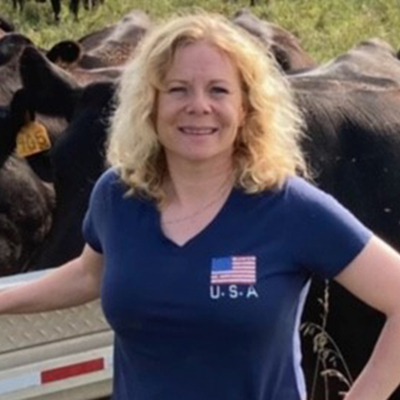
"Cover crops complement the cow-calf operation; we have witnessed improvement in the soil’s water-holding capacity and utilize cover crops as a feed source. We’re put here to take care of the animals and the land. It’s rewarding to witness the progress that is being made to soil health while protecting water quality. We treat the rented land as if it was our very own and want to do all we can to improve the soil."
Liz Pierce | Corn, Soybean, Alfalfa and Cattle Farmer
Boone County, Iowa
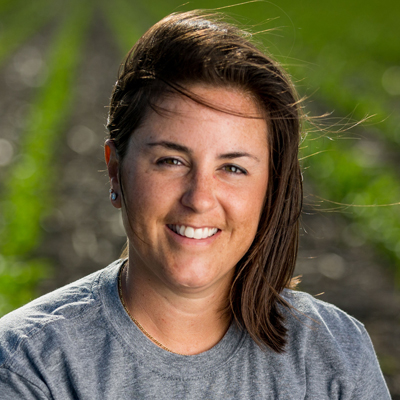
"On our flat, tile-drained landscape, subsurface drainage is where we focus our stewardship efforts. The in-field practices we use – cover crops, rotational grazing, no-till, strip-till and data-driven nutrient management – provide the control we need to protect our investment and the natural resources. The motto on our farm is to strive for continual improvement. I believe if I’m not protecting the soil then I’m not doing my job as a farmer, a mother and a community member."
Kellie Blair | Corn, Soybean, Small Grain, Cattle and Hog Farmer
Webster County, Iowa

"In the mid-’90s I switched to no-till to stop erosion on my fairly flat to rolling land. Cover crops were added in 2012 for added soil health benefits. Grassed headlands and buffer strips have conservation benefits and provide habitat for wildlife. Soil testing provides the information that makes me be a good steward of nutrients. My goal is to have the economics of farming in balance with my community and the environment. Using 4R Plus practices helps me achieve that goal."
Mark Jackson | Corn and Soybean Farmer
Mahaska County, Iowa
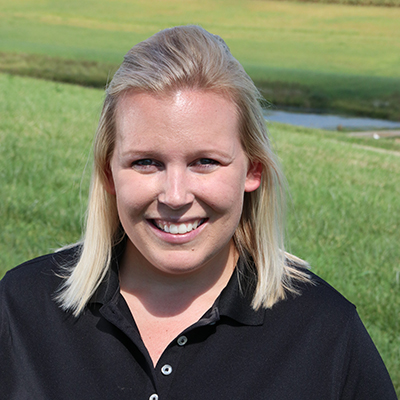
"We use an integrated 4R Plus approach because it makes economic sense and protects our natural resources. Soil testing is the starting point for our 4R nutrient plan. The conservation practices we have added, like waterways and buffer strips, limit soil and sediment loss. It’s important to use 4R Plus practices to maintain the legacy of passing the land to the next generation. We want to improve the soil and make sure it remains healthy and profitable for our operation."
Emily Doyle | Corn and Soybean Farmer
Tama County, Iowa
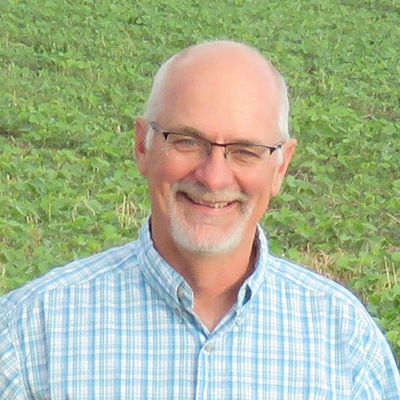
"I no-till soybeans, plant cover crops after seed corn harvest and have an extensive system of waterways. Cover crops solve a lot of problems like erosion, suppress weeds and improve soil health. I encourage farmers to rethink what they are doing for the betterment of the land. I made the decision years ago to invest in the soil that I’m making a living on. I’m interested in maintaining the land so it’s more productive now and for generations to come."
Eric Andersen | Commercial and Seed Corn and Soybean Farmer
Grundy County, Iowa

"I have increased no-till and cover crop acres to all the land I farm. This system works well with my cattle operation, as they feed on the cover crops, which lowers my feed, machinery and fuel costs. The cattle also clean up the crop residue to make it easier to plant in the spring. The added benefit is I’m improving the soil and maintaining top-end yields."
Tim Daly | Corn, Soybean and Cattle Farmer
Dubuque County, Iowa

"Annual soil testing helps me know what nutrients – and at what rate – the crops need for my strip-tilling system. I’m focused on returning the soil to the condition it was when I started farming. I’m seeing soil health improvements with cover crops. The added benefits of these practices are savings in labor and fuel. My crop yields continue to improve. "
Wayne Watts | Corn, Soybean and Hog Farmer
Wright County, Iowa

"I no-till all of my soybean acres and strip-till all of my corn acres, which has improved the structure of the soil and saves time and fuel costs. Cover crops add soil health benefits and keep the valuable nutrients on the land. The benefits are cumulative – the longer these practices are in place the more soil improvement I see."
Doug Adams | Corn and Soybean Farmer
Humboldt County, Iowa

"I use nutrient management practices and changed my tillage practices to strip tillage. I’ve also incorporated cover crops. When I consider the money I spend on different types of insurance to protect my assets, my most important asset as a farmer is my land."
Tim Smith | Corn and Soybean Farmer
Wright County, Iowa

"I use strip-tillage, strip-cropping, variable-rate nutrients and cover crops. I started the conservation practices for economic reasons, especially strip-tilling. A neighbor wanted me to try strip-cropping. We found out that the economic benefits from it are tremendous, and it’s also a great conservation piece. It keeps the soil intact and actually holds more snow in the wintertime."
Dean Sponheim | Corn and Soybean Farmer
Mitchell County, Iowa

"I know that if we don’t take care of the ground, the ground isn’t going to take care of us. We feel it is our legacy to leave the farm in better shape than when we got it."
Jolene Riessen | Corn and Soybean Farmer
Ida and Sac counties, Iowa
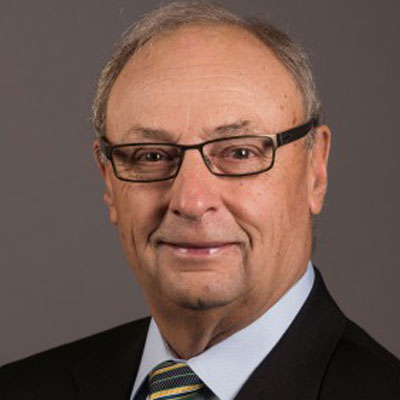
"I did an equipment cost analysis for eight years and concluded I was saving $65 per acre in equipment and $27 an acre in labor costs each year with a combination of strip-till/no-till compared to conventional tillage. Using no-till, strip-till and cover crops, I’ve seen organic matter levels grow from 3 percent in 1984 to 4 to 6 percent in 2015."
Wayne Fredericks | Corn and Soybean Farmer
Mitchell County, Iowa
